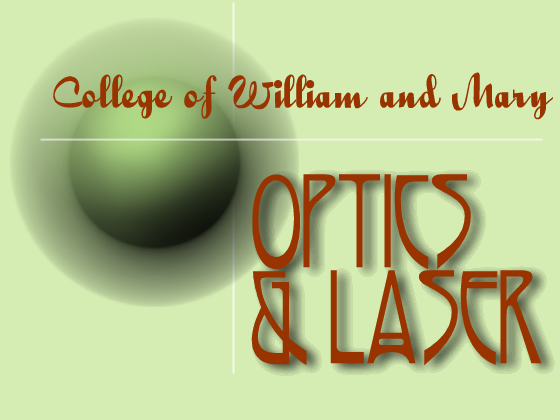
| |
| Home |
| Contact |
| Directions |
| Research |
| People |
| Publications |
| Photos |
| myWM |
Nonlinear Magneto-Plasmonics |
Surface plasmon (SP) is an electromagnetic wave that propagates along a metal-dielectric interface. The charge fluctuations are localized in the direction normal to the surface within the Thomas-Fermi screening length of about 1 Å. The field of SP is described by
where z is the direction normal to the surface , kz is the imaginary wave vector, which causes the exponential decay of field Ez, x is the direction parallel to the surface, kx is the real surface plasmon wave vector, indicating the propagation direction of the SP, ω is the frequency of the wave, and t is the time.
 |
|---|
The electromagnetic field has its maximum at the surface and decays exponentially normal to the surface, which are the typical properties of a surface wave. This explains the surface sensitivity and gives a prediction on possible application of sensors. The other most important feature of SP is a strong enhancement of the electromagnetic field at the metal-dielectric interface with the excitation of SP by light. This field enhancement has many applications such as enhanced photoluminescence, enhancement of light scattered at Rayleigh waves, surface enhanced Raman scattering (SERS), enhanced emission of light from tunnel junctions, bio-chemical sensors by enhanced magneto-optic Kerr effect (MOKE), enhanced nonlinear optical processes like magnetization-induced second harmonic generation (MSHG).
Magneto-plasmonics (MP) describes hybrid systems where plasmonics and magnetic properties coexist, and has great potential for MO devices. MP has generated much interest because of the potential applications in bio-chemical sensors and the magnetic control/modulation of SPs. As a traditional method to study MP effect, MOKE changes the polarization of incoming light when interacting with magnetic media. In general, it is typical to use a thick magnetic layer to obtain a large change of polarization because MOKE is a bulk effect. Historically, one dilemma for MP systems is that the noble metal layer supports high quality SP, but a very large magnetic field (several Tesla) is needed to achieve MO activity. On the other hand, the ferromagnetic (FM) layer exhibits large MO activity, which makes it possible to make real MO devices. However, the huge losses in the FM layer causes an over damping of plasmon resonance, and thus impairs the strength of SP. The prevailing configuration, noble metal/FM/noble metal heterostructures, combines the strength of good quality SP and large MO effect, but makes the structure complex and separates the source of SP and magnetization which compromises the coupling between them.
Nonlinear Magneto-Plasmonic (NMP) refers to the intersection of Nonlinear Plasmonics and MP, adopting nonlinear MOKE, especially MSHG as a research tool. As a surface sensitive MO effect, MSHG contains nonzero magnetic components of the second-order nonlinear susceptibility tensor which makes MSHG extremely sensitive to subtle modifications of the spin-polarized electronic structure of transition metal surfaces, the same region where SP is present. Many advantages are expected from NMP: 1) the field enhancement effect of SP makes the MSHG signal stronger, which is favorable for magnetic materials with smaller susceptibilities and lower damage threshold; 2) the overlap in geometry removes the need for complex hetero-structures, which is favorable for device development; 3) the direct contact of SP as a surface wave and MSHG source might bring some novel effects; 4) the combination of the two surface sensitive effects, SP and MSHG, makes it of interest for bio-chemical sensors.
 |
|---|
References:
- Wei Zheng, Xiao Liu, Aubrey T. Hanbicki, Berend T. Jonker, and Gunter Lüpke, Nonlinear Magneto-Plasmonics, Optical Materials Express 5(11), 2597 (2015).
- Wei Zheng, Department of Applied Science, and College of William and Mary. Nonlinear Optical Studies of Photoelastic Effect and Magneto-plasmonics, Ph.D. thesis, 2014.
Funding: DOE
|